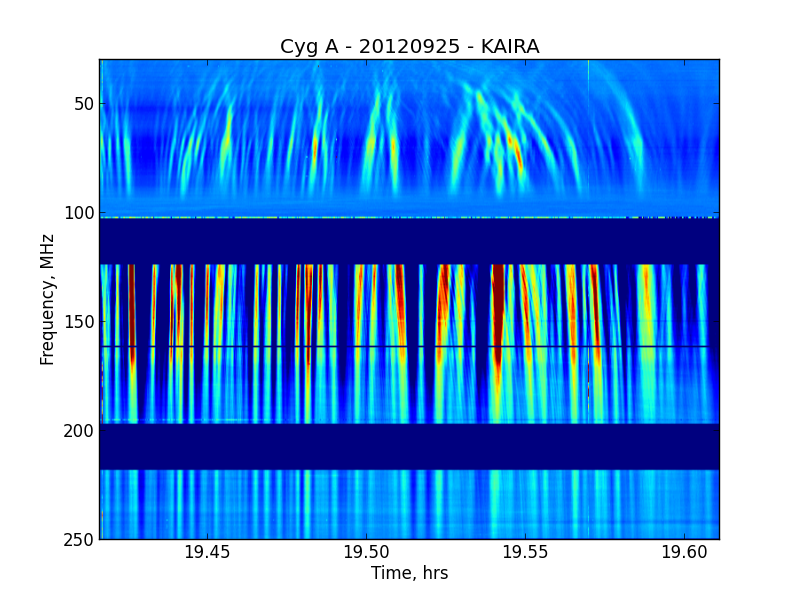| Description: | The scintillation of point-like radio sources is a well-known phenomenon which arises from the diffraction and refraction of light due to density variations in the line of sight between the source and the observer. Usually, scintillation occurs due to one or more distinct regions in the line of sight: the interstellar medium (InterStellar
Scintillation, ISS), the interplanetary medium (InterPlanetary Scintillation, IPS) and the Earth's ionosphere (Ionospheric Scintillation, IoS). This talk will focus on the latter two cases. IPS has been used for many years to probe the solar wind. As a remote sensing technique, it is capable of being used to provide global measurements of solar wind speed and estimates of density on a regular basis, thus complementing the single-point measurements from spacecraft. Different analysis techniques can be used to probe the solar wind: tomography from many measurements is used to provide a global picture of solar wind density and speed, while in-depth analysis of single observations can be used to observe different solar wind streams and Coronal Mass Ejections in the line of sight. The wide bandwidth of LOFAR is opening up new perspectives in the study of scintillation in the near-space environment, with recent advances in the field of ionospheric scintillation. The evolution of scintillation from weak to strong scattering regimes has been directly observed in dynamic spectra. Scintillation arcs, seen previously in two-dimensional power spectra from interstellar scintillation observations, have been noted for the first time using observations of ionospheric scintillation. This offers new methods of studying the plasma structures giving rise to the scintillation. |

